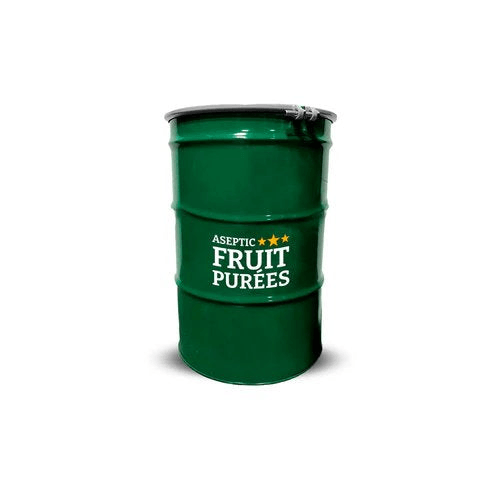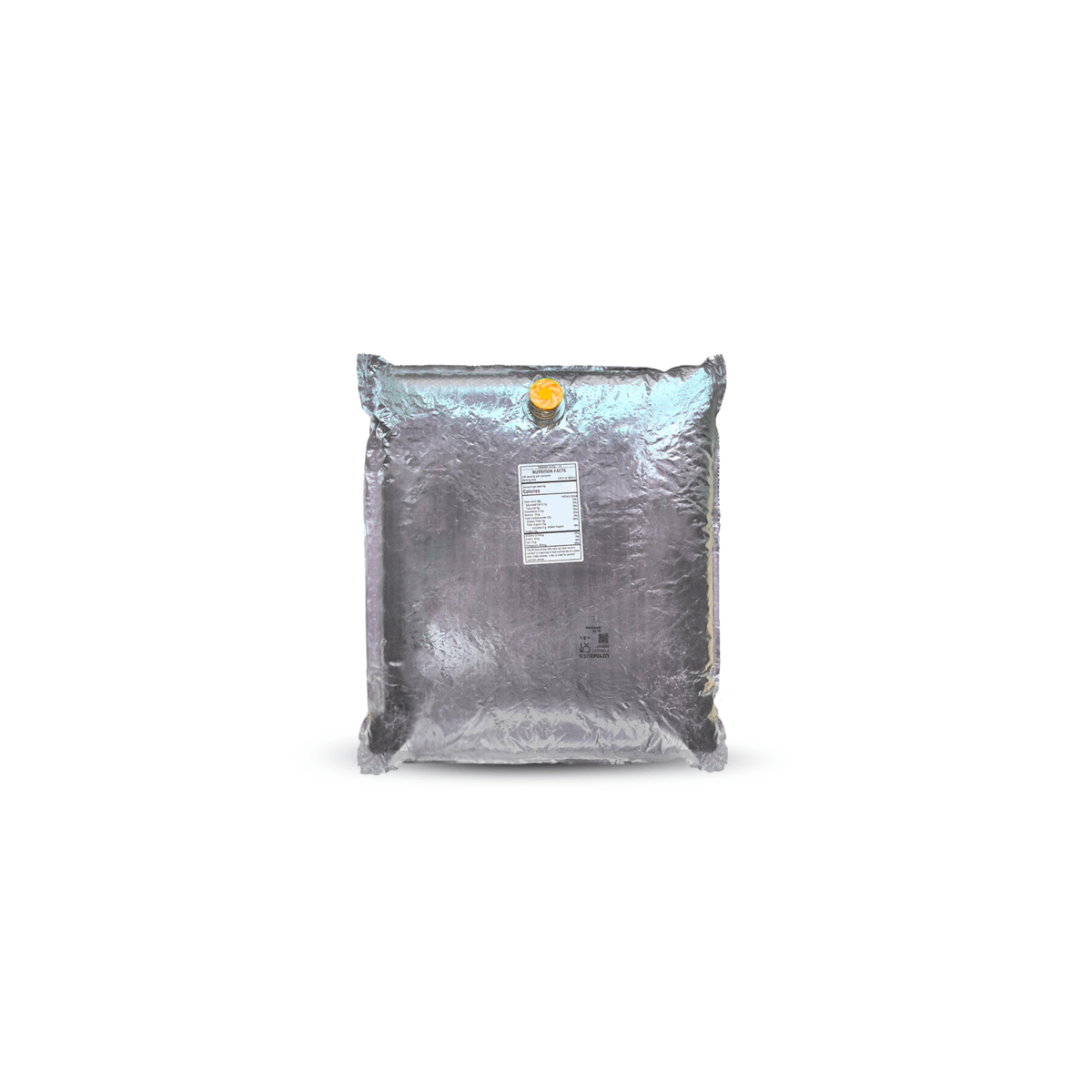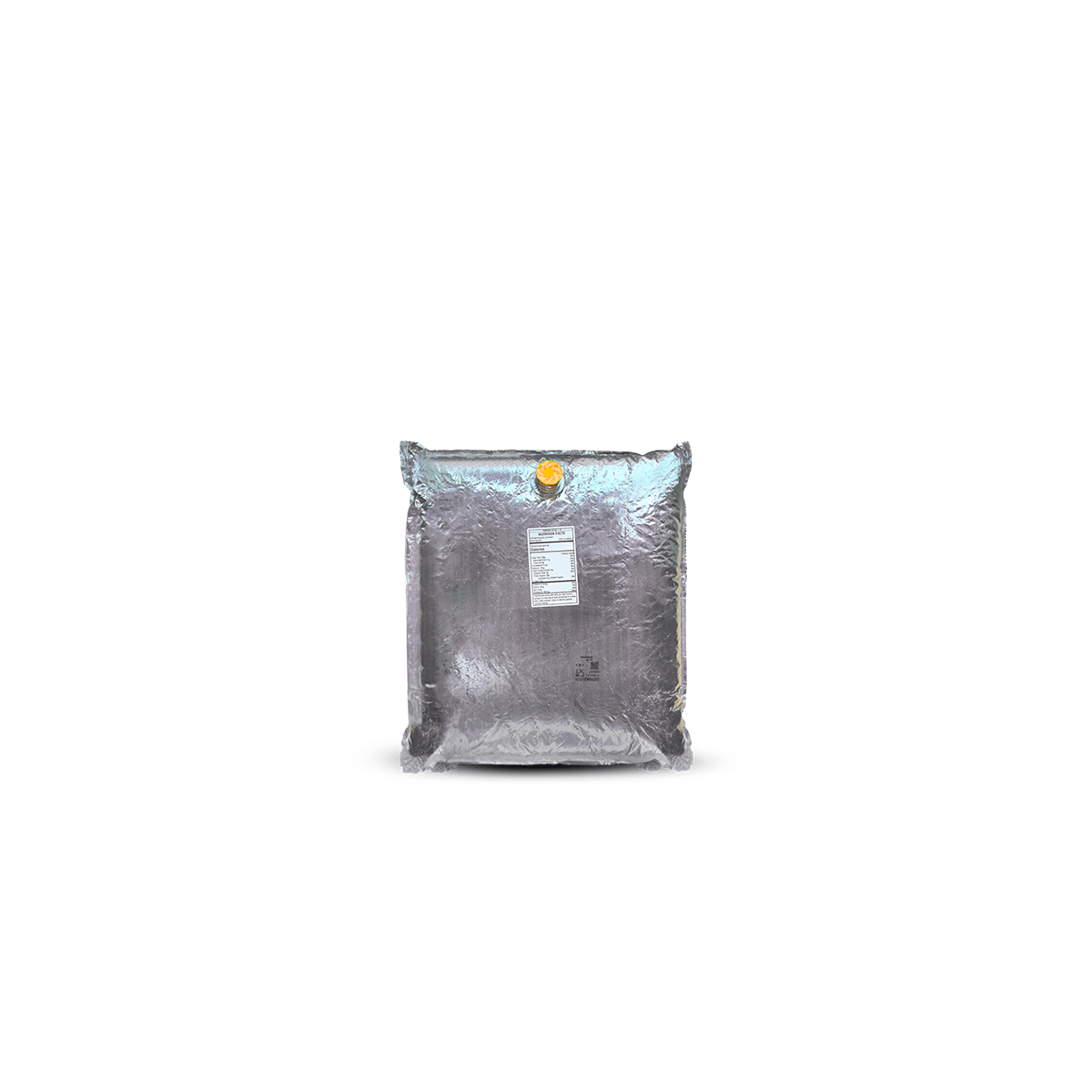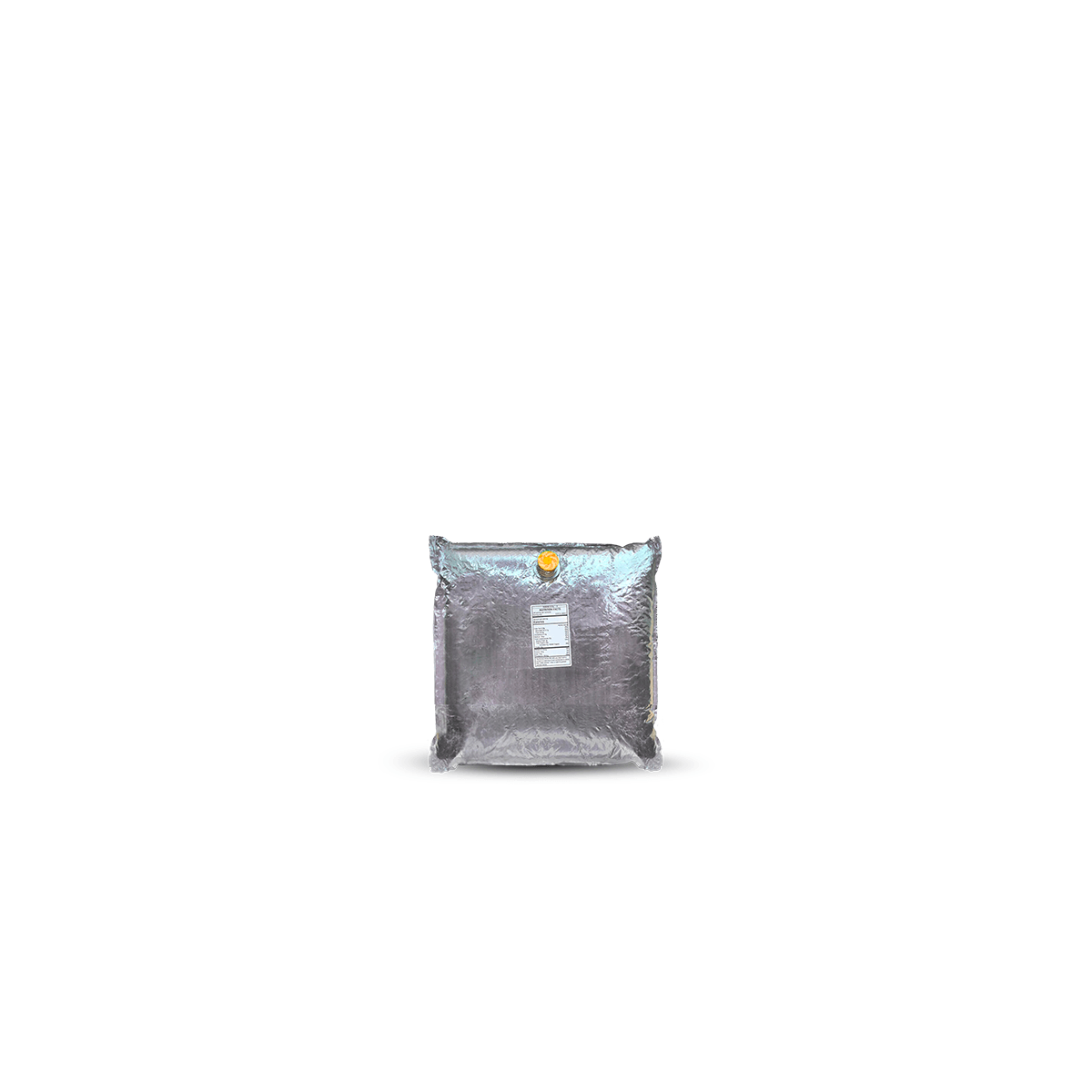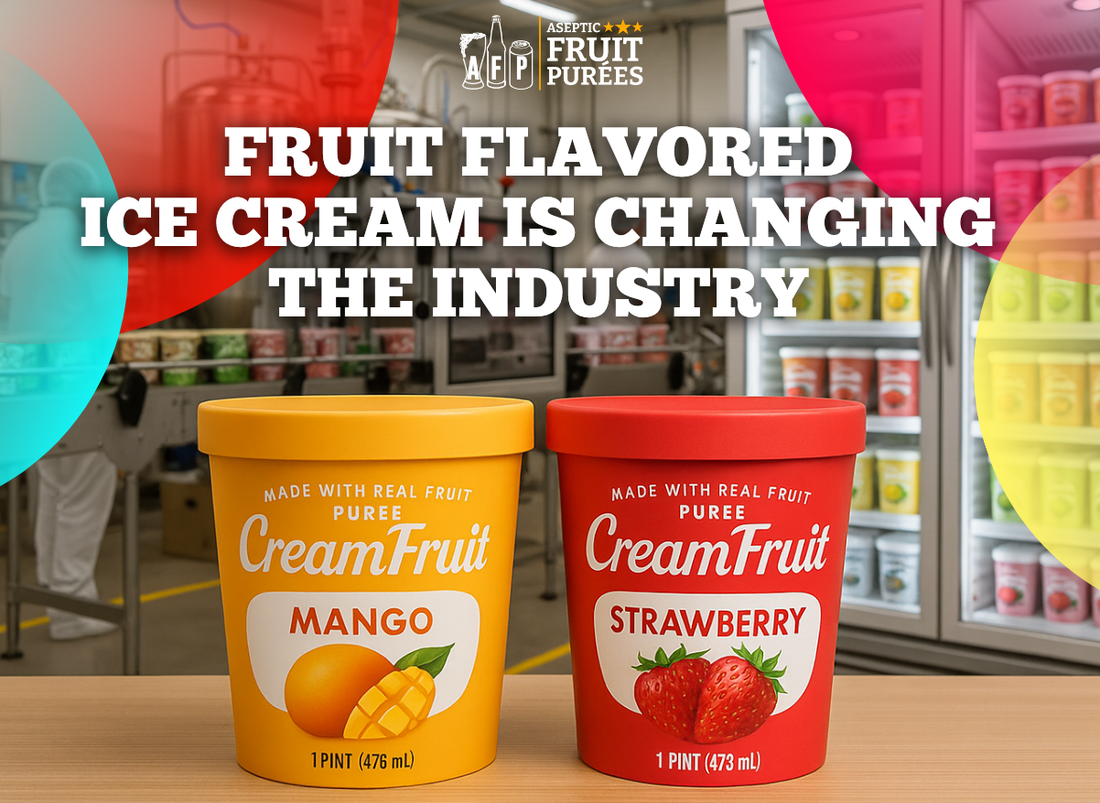Fruit flavored ice cream is reshaping the way ice cream makers develop their products. With consumers demanding clean labels, natural flavors, and formulations they can trust, fruit purées have emerged as essential allies in the frozen dessert industry. For those interested in transparency and consumer trust, we also recommend our blog on the Clean Label Revolution in the Ice Cream Industry.
What makes fruit flavored ice cream so popular today?
The global fruit ice cream market was valued at USD 21.8 billion in 2023 and is projected to reach USD 28.7 billion by 2030, growing at a CAGR of approximately 4.1% (Grand View Research). In North America, fruit-flavored ice cream is expanding even faster than traditional flavors, with an estimated CAGR of 6.5% (Market Data Forecast). Consumer research further confirms this momentum: more than 71% of U.S. adults prefer ice cream made with simple, natural ingredients (National Frozen & Refrigerated Foods Association).
Why should an ice cream maker choose puree over syrups?
Fruit purées provide the authentic taste of real fruit, not just concentrated sweeteners or artificial flavors. In frozen dessert formulations, purées deliver a cleaner flavor profile, natural color, and consistent texture with less need for additives such as artificial colorants or preservatives. When ice cream makers use aseptic fruit purées without added sugars or artificial preservatives, such as those offered by AFP, they strengthen their clean label strategy and build consumer trust. As we explained in our Clean Label Revolution in the Ice Cream Industry, ingredient transparency is a proven driver of brand loyalty.
How much purée should I add to an ice cream base?
The practical guideline is 2 to 3 pounds of purée per gallon of ice cream base. This ratio provides a balance of flavor and texture without creating cost or formulation issues. Lighter fruits, such as peach ice cream, generally perform well at the lower end of this range, while bold and acidic flavors like passion fruit ice cream, blueberry cheesecake ice cream, or lemon ice cream often require closer to three pounds to achieve the desired impact.
Can fruit purées be used in soft serve and gelato machines?
Yes. Purées that are seedless, smooth, and pulp-free prevent clogging in valves or pumps, making them ideal for industrial gelato and soft serve equipment. In gelato, where overrun and mouthfeel are critical, purées add concentrated flavor without disturbing structure. In soft serve systems, purées can be blended directly into the base, as long as ratios are managed carefully to avoid over-hardening or crystallization.
What fruits work best for frozen desserts?
Using fresh strawberries for strawberry ice cream
The use of purées made from fresh strawberries creates strawberry ice cream with brighter flavor, stronger aroma, and more natural color. This reduces the need for artificial colorants and delivers the experience consumers expect.
Why passion fruit ice cream is trending in the U.S.
Tropical flavors like passion fruit ice cream are gaining traction in North America as consumers seek exotic taste profiles. Passion fruit’s tangy notes and vibrant appearance appeal strongly in both dairy and non-dairy frozen desserts (Innova Market Insights).
Raspberry and pumpkin ice cream for fall and winter
Raspberry brings a vibrant tartness that cuts through the richness of fall desserts, while pumpkin delivers the creamy, spiced character that defines the season. Together, they create ice cream profiles that feel festive, warm, and indulgent, yet balanced. From raspberry swirls in cheesecake-style bases to pumpkin ice cream with cinnamon and nutmeg, these flavors capture the essence of fall and winter while giving consumers something both comforting and exciting.
Peach ice cream for classic and modern recipes
Peach ice cream balances nostalgia with innovation. While many consumers associate peach with tradition, modern recipes incorporate it with herbs, spices, or honey for differentiation in a competitive marketplace.
Blueberry cheesecake ice cream as a premium innovation
Blueberry cheesecake ice cream combines sweet and tart fruit character with indulgent cheesecake swirls. This profile resonates strongly with premium and artisanal ice cream makers seeking to stand out with differentiated offerings.
How does fruit purée improve frozen recipes?
Fruit purées maintain the volatile aromatic compounds that syrups or concentrates often lose during processing. This results in a more authentic flavor experience. They also support clean label demands by shortening ingredient lists and avoiding artificial additives. From a technical standpoint, purées add natural moisture, color, and fruit solids, improving texture without disrupting fat or overrun balance when properly integrated into the ice cream base.
What is the shelf life of aseptic purées for ice cream makers?
AFP’s aseptic fruit purées can last up to 18 months unopened when stored at a maximum of 75°F. Once opened, they remain fresh for about five days under refrigeration, or up to six months if frozen. This long shelf life allows ice cream makers to manage inventory efficiently without dedicating freezer space to unopened ingredients, reducing waste and improving production planning.
👉 While unopened purées are stable at room temperature, we recommend storing strawberry and raspberry purées under refrigeration to preserve their vibrant color better until they are opened.
What are the most popular fruit ice cream flavors in 2026?
Strawberry remains a top flavor. In the U.S., strawberry ice cream represents nearly 27% of fruit ice cream sales (ZipDo). Other established flavors like lemon ice cream and peach ice cream continue to perform strongly, while tropical fruits such as mango and passion fruit are growing rapidly in popularity, especially in plant-based desserts. In the artisanal ice cream segment, “fruits and nuts” account for 43.3% of flavor launches globally (Market.us), proving that fruit-forward profiles dominate the category.
Do consumers prefer real fruit over artificial flavors?
Yes. Research shows that today’s consumers actively seek out products made with real fruit instead of artificial flavors. More than 70% of U.S. adults say they prefer ice cream with natural and recognizable ingredients, and they are willing to pay more for frozen desserts that deliver this authenticity. This shift reinforces the value of fruit purées, which allow ice cream makers to highlight real fruit content while reducing reliance on synthetic additives.
How do ice cream makers balance flavor and texture?
Balancing flavor and texture requires adjusting the ratio of purée to ice cream base, managing sugar and fat content, and conducting pilot tests. For premium launches like blueberry cheesecake ice cream, the challenge is ensuring the indulgent inclusions complement the fruit base. For peach ice cream, producers may test purée variations to find the right balance between sweetness and acidity. Aseptic purées allow consistent results by eliminating variability in fruit ripeness or quality.
Why fruit purées are ideal for clean label recipes
Connecting back to our blog on the Clean Label Revolution in the Ice Cream Industry, fruit purées from AFP align perfectly with consumer expectations. They are 100% fruit, without artificial flavors or preservatives, making them ideal for clean-label recipes. For ice cream makers, this is a competitive advantage, especially when developing recipes with favorite fruits such as strawberry, lemon, peach, passion fruit, or blueberry.
What favorite fruits do consumers look for in frozen desserts?
The most in-demand fruits for frozen desserts include strawberries, peaches, lemons, blueberries, and passion fruit. Tropical fruits such as mango are also growing in popularity. Premium variations like blueberry cheesecake ice cream demonstrate how fruit can be combined with indulgent formats to attract consumers seeking unique experiences.
How to scale fruit puree use for industrial ice cream production?
Scaling requires sourcing aseptic fruit purées in bulk formats such as drums or aseptic bags. Consistency is critical—working with a supplier like AFP ensures each lot matches in quality and ripeness. From a logistics perspective, shelf-stable packaging allows more efficient storage and transportation. Production lines can be adapted to incorporate purées in gelato, soft serve, and industrial ice cream bases with minimal adjustment.
How fruit purées fit in both dairy and plant-based ice cream recipes?
In dairy recipes, cream and milk enhance fruit character, producing indulgent outcomes. In plant-based recipes, where bases like almond, oat, or coconut milk are more neutral, purées provide the boldness necessary to stand out. This makes fruit purées essential for producers who serve both traditional and plant-based frozen dessert markets.
Where can ice cream makers connect with suppliers? (CONECON 2025)
The frozen dessert industry thrives on innovation and networking. That is why AFP will participate in CONECON 2025, taking place November 9–11 at the Palm Beach Convention Center in West Palm Beach, Florida. Known as “the coolest event in the frozen dessert world,” Conecon brings together ice cream and frozen dessert professionals for hands-on workshops, supplier showcases, competitions, and business sessions. It is the perfect place for ice cream makers to learn how fruit purées can elevate their recipes and to discover the future of frozen desserts. AFP will be there to share expertise and connect with industry leaders.
Final Takeaway for Ice Cream Makers
Fruit flavored ice cream is not just a trend—it represents measurable growth in the global frozen dessert market. Aseptic fruit purées deliver authentic flavor, clean label benefits, and operational flexibility for ice cream makers. Popular flavors like strawberry ice cream, peach ice cream, lemon ice cream, passion fruit ice cream, and blueberry cheesecake ice cream are positioned to remain consumer favorites in the years ahead. With AFP as a trusted partner, producers can innovate confidently, scale efficiently, and stay aligned with the expectations of a health-conscious, flavor-driven market.


